Curated by the artist and published online by Media-Star.
Page 1 of 3

- For decades Kolker studied ibn Ezra’s scriptural commentaries and liturgical poems.
- In December 2019, Kolker once again read Robert Browning’s poem, Rabbi Ben Ezra.
- ‘The best is yet to be’ had rung true to Kolker as a title for his next exhibition.
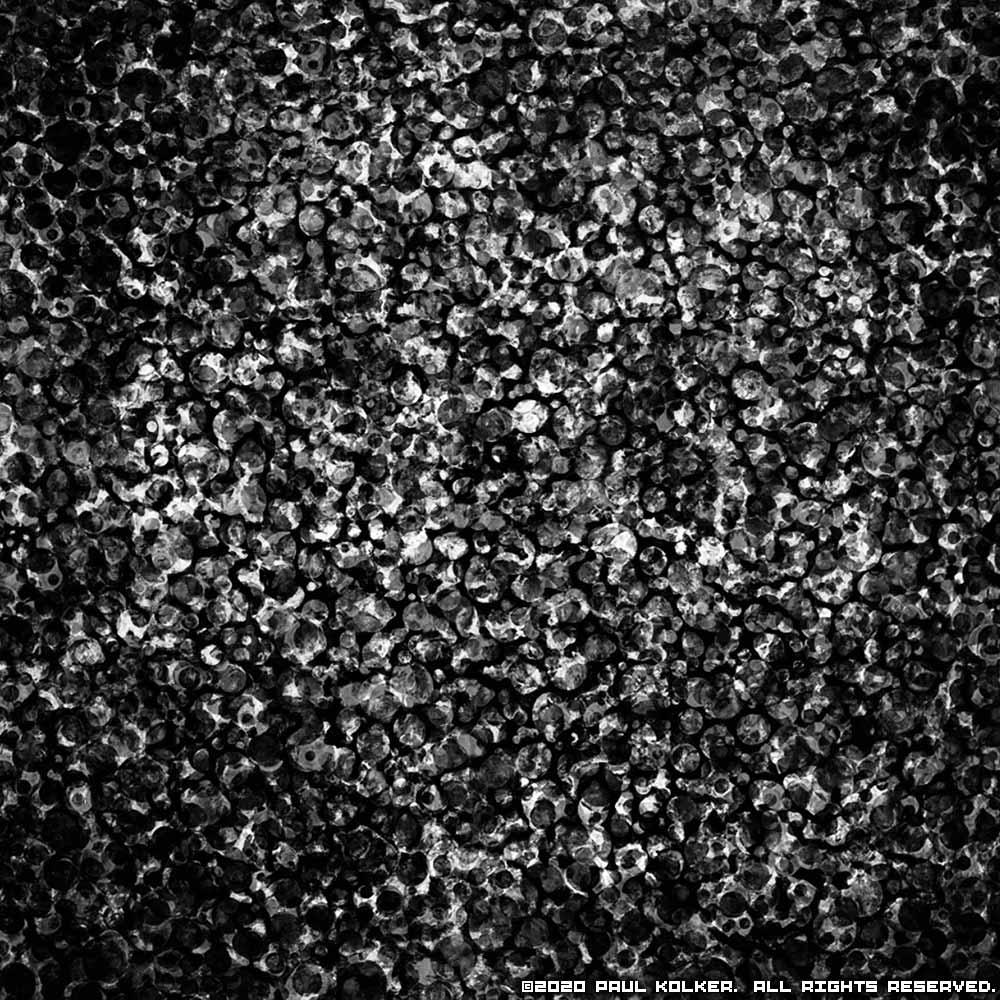
Having read a translation of ibn Ezra’s ‘The Beginning of Wisdom,’ a textbook on medieval astrology, Kolker on an Acela trip to Washington, DC in early February 2020 composed his next show’s anchor painting;
- starry night synthèse noir, 2020
- inkjet and acrylic on canvas
- 99 x 99 inches in nine parts.
This work, above, is a stack of sixteen layers of color pigment decalcomania dot paintings digitally reverted to grayscale.

- While on that same Acela train ride he located and ordered a rare copy of George Sarton’s 1934 edition of ‘The Introduction to the History of Science, From Rabbi Ben Ezra to Roger Bacon.’
- The two volumes arrived on March 5, 2020, only days before COVID-19 had begun to make headlines… sending us into quarantine and social distancing to protect us from the novel virus’ submicroscopic dots we couldn’t see; invisible like the daytime stars.
- After Kolker closed the doors to all visitors at the Paul Kolker Collection on March 10, 2020 to preserve public health and safety… an entirely new paradigm for virtual art exhibition was conceived.
- Before the end of March 2020, when the pandemic was raging in New York City, Kolker outfitted a large studio in the safety of his Long Island home.
- Sandwiching paint between canvas and sheet plastic, he executed his decalcomania process by manipulating acrylic pigments dispersed in mixing mediums, retardants and lubricants to paint gesturally, as if he were touching the screen of his tablet or smart phone with his fingers, hands or special tools to stir and move the paint mixture.
- When the plastic film is carefully pulled and lifted, a variety of fractal-like patterns appear.

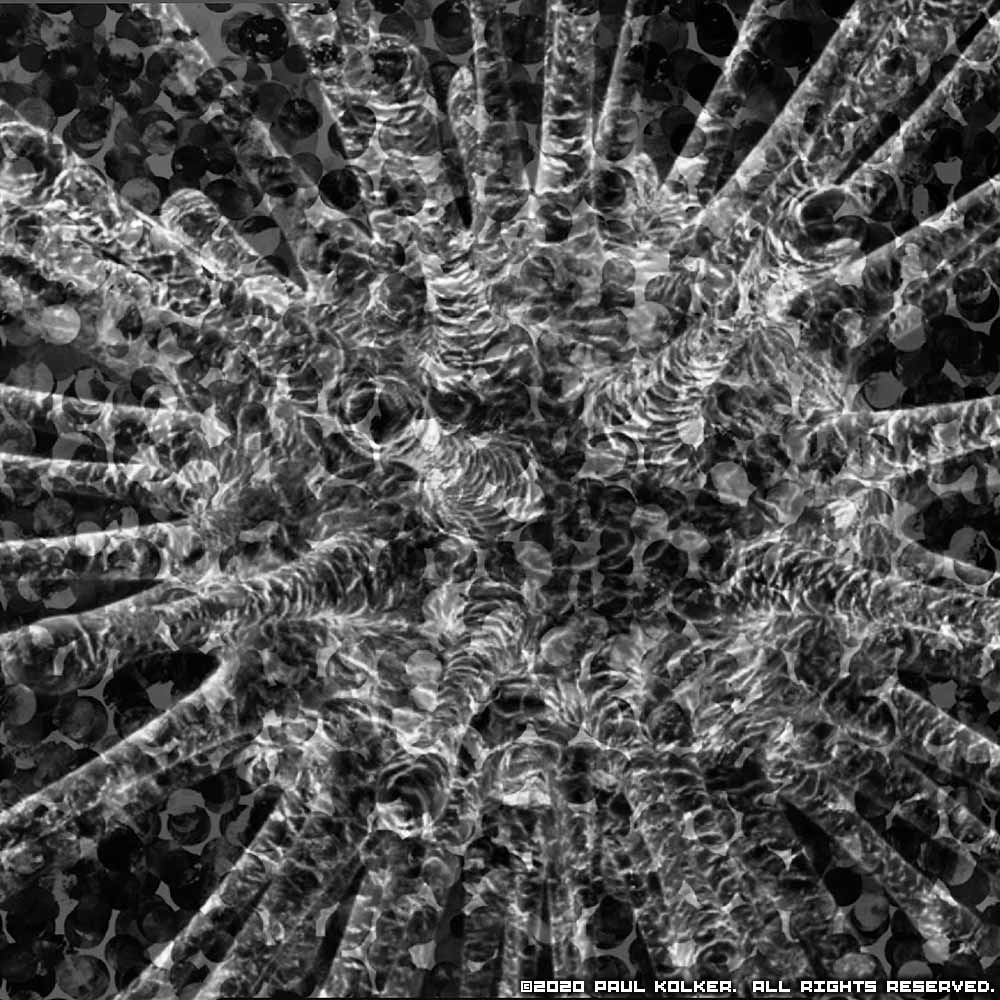
- Depicted above is Paul Kolker: covid synthèse noir, 2020
- inkjet and acrylic on canvas
- 99 x 99 inches in nine parts
Kolker’s abstract decalcomania paintings are used to overlay prints or other paintings on the subjacent canvas in a process which he calls ‘synthèse;’ a synthesis of abstract and figural forms, fields of color and hard edges; requiring vinyl-cutting as depicted above.
The hard edge is the circumference of a circle for Kolker’s iconic dot, reminding us of the ultra high definition formatting of dots on the screens of our devices, which we no longer see unless we zoom-in.
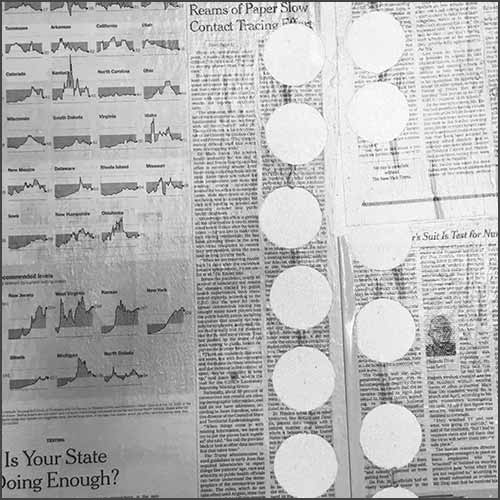
Kolker collected tears of articles from The New York Times about the COVID-19 pandemic from March through September 2020, and glued them, with of course negative spaces of his iconic dots, on to canvas readied for his decalcomania overpaintings.
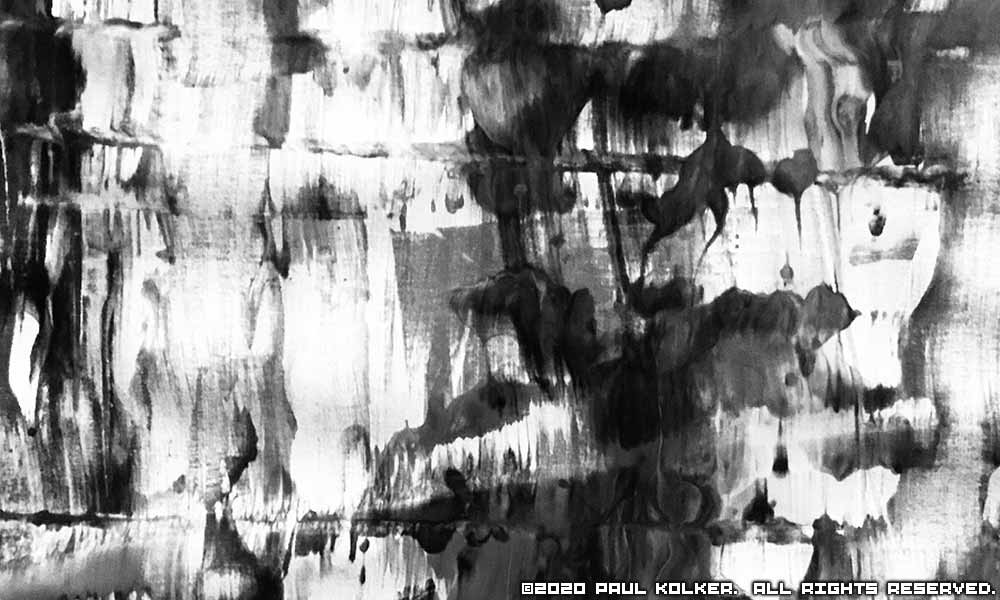
- Paul Kolker: distancing madame matisse decalcomania noir, 2020
- inkjet and acrylic on canvas
- 99 x 165 inches in fifteen parts
Macroscopic photographs of his many paintings, illuminating distance between each component abstract form, were converted from color to noir because of the allusion to those illness-boding dark shadows of the pandemic; as well as our guidelines for social distancing.
Kolker’s titling is in attribution to Helen Frankenthaler, and the ‘distancing’ of the various abstract forms of her ‘color field’ painting, Madame Matisse, 1983.
Kolker, during his more than five decade surgical career, has used a plastic film under-coated with a liquid iodinated antiseptic as patient protective equipment (PPE) to mask the surgical field and ensure sterility.
Serendipitously today Kolker’s use of vinyl film in his decalcomania process and as masks for his hard edge paintings makes us aware of the public, personal and patient protective equipment we all must use to mask the spread of coronavirus.

- Paul Kolker: inadvertent wave decalcomania, 2020
- inkjet and acrylic on canvas
- 33 x 55 inches
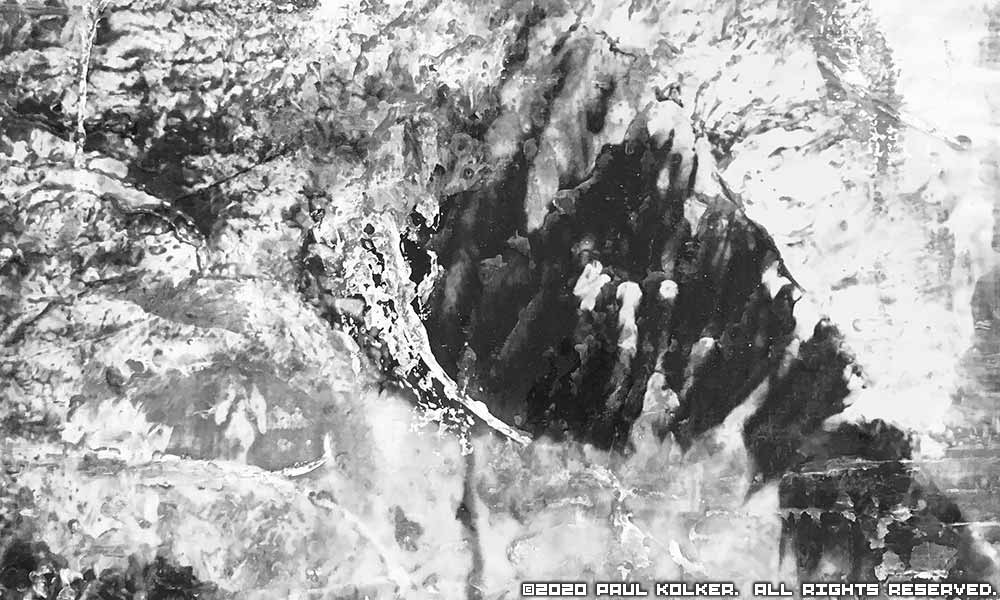
- Please note the fractal-like striations, waves and branchings in:
- Paul Kolker: inadvertent wave decalcomania noir, 2020
- inkjet and acrylic on canvas
- 33 x 55 inches
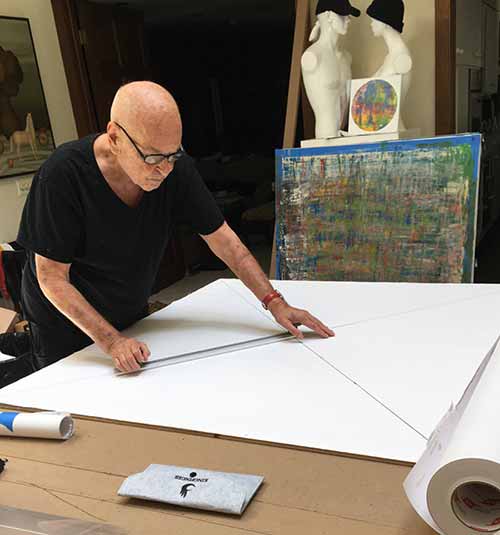
Kolker’s procedural experiment testing adjunctive gestural paint-manipulation decalcomania techniques (using not only fingers, hands, tubes and brayers, but stiff brushes, squeegees, burnishers, shim sticks and a variety of retardants and lubricants) also tests how a newsprint narrative of the pandemic hidden beneath the paint becomes a tabula rasa, an erased slate, which is rewritten by the viewer based on her dialogical perceptions of this virtual exhibition by, perhaps, putting herself in the shoes of the artist.
During his six months of COVID lockdown, Kolker has painted more than eighty decalcomania canvases for this exhibition; while also cutting all vinyls by hand.
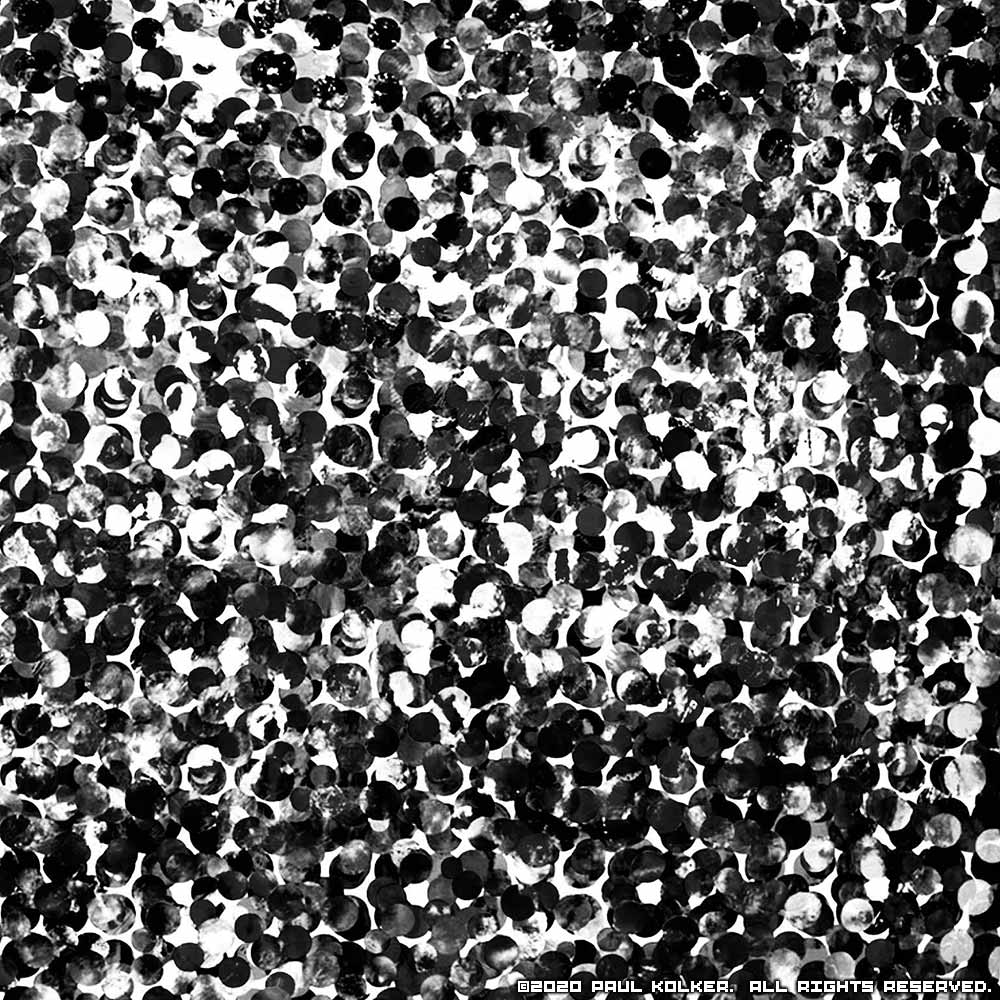
- Paul Kolker: philtrum abstract decalcomania noir, 2020
- inkjet and acrylic on canvas
- 33 x 33 inches
Talmudic aggadah tells the story of a fetus who while developing in utero acquires all the knowledge of the universe; and when the dimple on her upper lip, the philtrum, is tapped by the finger of an angel as a stimulus for her first breath… she loses all memories of that knowledge.
Aristotle, in De anima, (On the Soul), also proposes the concept of being born with a tabula rasa, an erased tablet, or a ‘clean slate of the mind’ readied to acquire sensory experiences, intellectual knowledge and intuition.

- Paul Kolker: felt sick in march synthèse noir, 2020
- inkjet and acrylic on canvas
- 33 x 33 inches
The philtrum dot painting overlays an electron microscopic image of SARS-2 coronavirus digitally placed above a photograph of a tear from The New York Times. The synthese composition is converted to a grayscale version in high contrast.
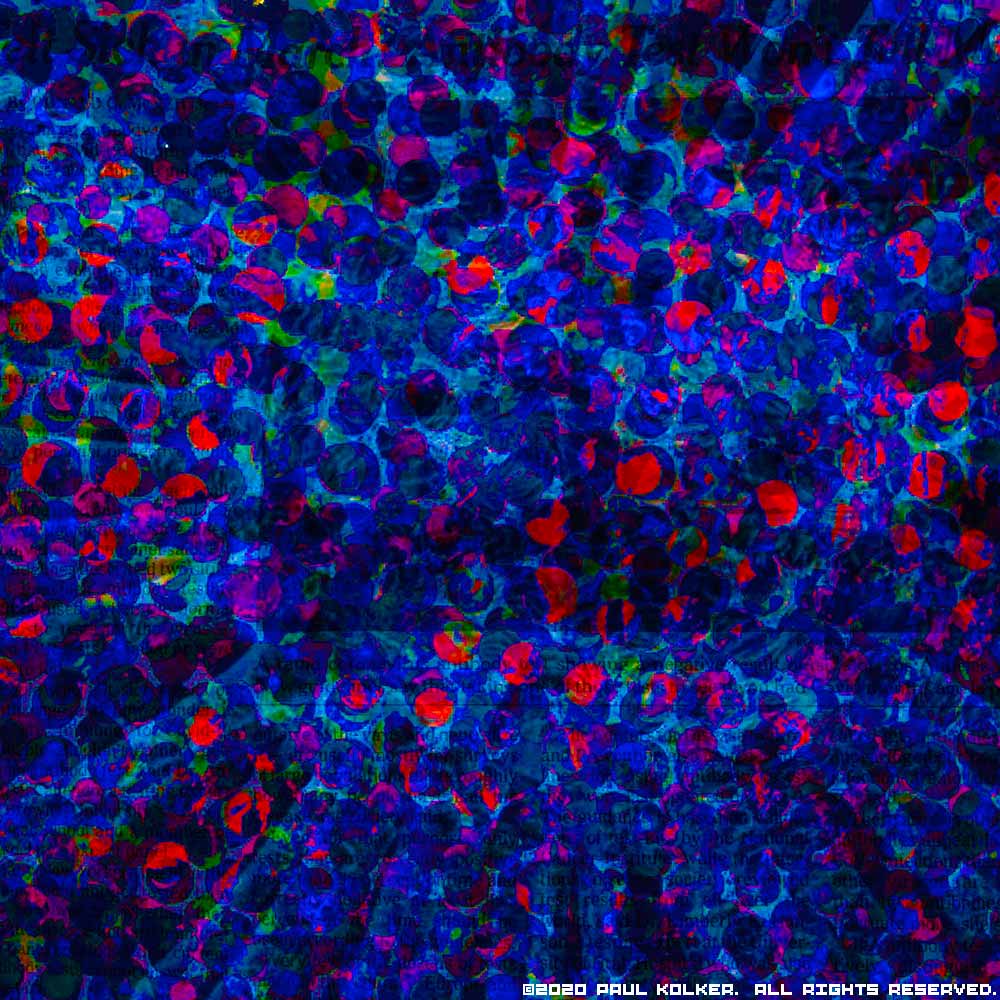
- Paul Kolker: felt sick in march synthèse, 2020
- inkjet and acrylic on canvas
- 33 x 33 inches
The multiple dot overlays in RBG are once again reminiscent of ibn Ezra’s heavenly orbs and Browning’s poetic commentary that ‘the best is yet to be.’
